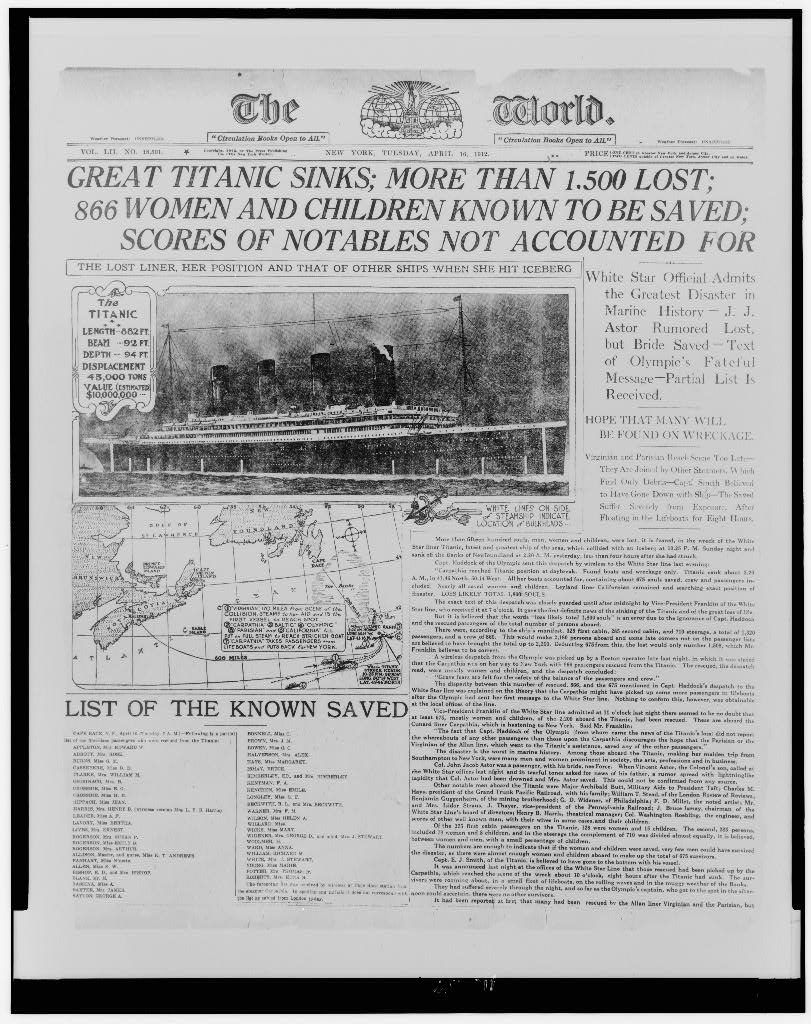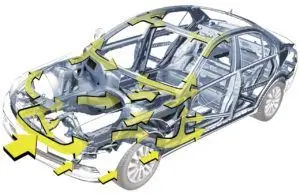
The Tracy Law Firm specializes in Crashworthiness cases that hold auto and bus manufacturers as well as car dealers responsible for safety defects that cause catastrophic injuries or death in a motor vehicle accident.
Crashworthiness is the science of minimizing the risk of serious injury or death in an accident through the use of safety systems.
The Titanic disaster is a perfect example to illustrate crashworthiness. With 2,224 passengers and crew aboard, the British passenger liner hit an iceberg but not a single passenger suffered a cut, a bruise, a broken bone or a concussion. Two hours and forty minutes later the Titanic sank and more than 1,500 passengers and crew members died.
Why? Because the safety systems on the ship were insufficient to save their lives. This is a classic case of the distinction between causing an accident versus causing the injury.
When it comes to motor vehicle accidents, the government crashworthiness standards for the National Traffic Safety Administration (NHTSA) and the preamble to the Federal Motor Vehicle Safety Standards states that safety systems do not prevent accidents. Crashworthiness safety systems prevent injuries and death.
Crashworthiness principles work together like the links in a chain. If one link in the safety system fails, this can cause the other safety systems to either fail or be ineffective.
Table of Contents
ToggleThere are five basic vehicle crashworthiness and occupant protection principles:
- Maintain occupant survival space (minimize crush)
- Manage the collision energy (dissipate crash forces)
- Restrain the occupant
- Prevent ejection
- Prevent post-collision fires
In order to provide adequate vehicle crashworthiness and occupant protection in a car crash or 18 Wheeler Accident, the vehicle’s safety systems must work together. Sadly, vehicle safety systems routinely fail. Here are a few tragic examples that we see in our personal injury law practice every day:
- The vehicle’s safety cage should prevent the car or truck’s front fire wall, doors, rear end or roof from crushing into the occupants. However, we commonly see drivers suffering a crushed foot or broken leg because the impact into the area beneath the front dashboard failed.
- A T-bone accident or broadside collision penetrates the passenger compartment because of a defect causing traumatic injury.
- Seat belts fail to stay buckled or doors fly open because of defective latches in a rollover accident. People are ejected from the car resulting in the amputation of an arm or leg or death.
- Defective airbags may deploy in a minor car accident causing airbag injuries or defective airbags may fail to deploy in a high speed car crash causing traumatic injury or death.
- Poorly designed roof structures in rollover accidents often crush down on the head of the driver or passengers causing them to suffer a spinal cord injury or traumatic brain injury that leaves them paralyzed for life.
- Seat back failure in rear-end-collisions causes the front seat to collapse on the backseat crushing children seated there for safety.
- Many vehicle structures don’t provide protection in the most common front end collision.
- A car fire burn injury caused by the vehicle catching fire in an car crash or 18 Wheeler accident. A car fire following an accident is usually caused by a safety defect.
The first four crashworthiness principles listed above have their genesis in corresponding techniques of product packaging for shipment. The typical television, for example, is packed in a heavy corrugated cardboard box, which is held closed with adhesives and staples, and molded Styrofoam surrounds the TV. Therefore, the cardboard box prevents ejection, maintains survival space and manages impact energy. The Styrofoam provides restraint and padding.

Hugh De Haven who is now referred to as the “Father of Crashworthiness Research” was instrumental in applying these principles to light aircraft and, later, automobiles. In 1917 he suffered serious injury in a mid-air collision with another pilot training in Texas for World War I. While recovering from his 500 foot spiraling crash which broke both of his legs and ruptured his pancreas, De Haven became interested in how crashworthy engineering could protect protect the survivors of accidents. He later founded the Crash Injury Research Project in 1942 to study airplane accidents and the Automotive Crash Injury Research Project in 1953 to do the same for motor vehicles. He conducted studies of car crash injuries at Cornell Medical School in the 1950’s and pressed Congress to require safer vehicles.
Two of these principles form the basis of Mercedes Benz’ famous patent (featured in their print and TV advertisements) which identifies a strong passenger “safety cell” to maintain survival space and crushable front and rear structures to manage the collision energy.

John Paul Stapp who was known as the “Fastest Man on Earth” would later evaluate crashworthiness principles by conducting tests with volunteers. Colonel Stapp undertook this effort, as he was tired of losing soldiers in the field who survived the accident but died of fire related injuries. Much of the crashworthiness improvements we see on vehicles today were developed for the aerospace and racing industry and that technology then translates into production vehicles.
The U.S. Army began work on crashworthiness when helicopter pilots in Vietnam started receiving spinal cord injuries and other fatal injuries in otherwise survivable crashes.

NHTSA’s website states that, “crashworthiness focuses on occupant protection to reduce the number of fatal and serious injuries that occur in the United States each year.”
The Insurance Institute for Highway Safety which is known for its highly publicized crash test videos, states that “a crashworthy design reduces death and injury risk.” When the Institute runs its vehicle crash tests it is evaluating the crashworthiness of the vehicles.
As stated earlier, crashworthiness safety systems do not prevent accidents from happening. Rather, crashworthiness safety principles prevent and minimize injuries following an accident. The basic concept of crashworthiness is to provide occupant protection in the event of an accident.
Car accident lawyer Todd Tracy has tried more vehicle crashworthiness cases against car and bus companies than any attorney in the world. Tracy who also has a degree in physics wrote the following engineering studies to explain how to know if a crashworthiness failure may be grounds for a personal injury lawsuit.

